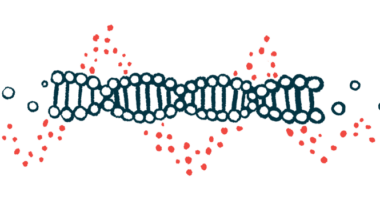Researchers develop quick test for finding genetic mutation
Device detects ATTR amyloidosis-causing mutation

Researchers have developed a point-of-care diagnostic device to quickly detect a genetic mutation known to cause hereditary ATTR amyloidosis, a group of diseases that includes familial amyloid polyneuropathy (FAP), in a blood sample.
In a study involving six people, the device was used to identify V142I, a mutation linked to ATTR amyloidosis with cardiomyopathy (ATTR-CM), a FAP-related disease that causes heart damage instead of nerve damage. However, the blood test could be adapted and scaled to detect other known disease-causing genetic mutations.
“Traditional genetic tests can take days or weeks to give results, which isn’t ideal for quick diagnosis,” Mehdi Javanmard, PhD, a professor at the at Rutgers University’s School of Engineering, said in a university news story. “This research aims to develop a faster, cheaper and easier test that can be done during a regular doctor’s visit.”
The findings were described in the study “Allele-specific electrical genotyping for diagnosis of transthyretin amyloidosis,” published in Communications Engineering as a collaborative effort between Javanmard’s team and researchers at Yale University School of Medicine.
Hereditary ATTR amyloidosis is caused by mutations in the TTR gene, which result in the production of a faulty version of a protein called transthyretin. This faulty protein forms clumps that accumulate to toxic levels in the body’s tissues, leading to progressive damage.
Quick test can aid diagnosis
Depending on the specific disease-causing mutation, hereditary ATTR amyloidosis can result mainly in neurological symptoms, heart-related symptoms, or a combination of both.
While the first symptoms may not appear until late in adulthood, early diagnosis can allow FAP treatment to begin when it is likely to be most effective.
The researchers focused on a TTR mutation linked to hereditary ATTR-CM, a form of ATTR amyloidosis that can cause heart failure if left untreated and “disproportionally affects patients of West African ancestry,” the researchers wrote.
The mutation, called c.424G>A (p.Val142Ile) or V142I, “remains underdiagnosed in the US and other countries due to the lack of available information about the variant’s clinical significance, coupled with the high cost of genetic diagnosis,” they said.
This led them to work on the development of a blood test that could quickly detect the genetic mutation.
They had previously applied a technique called allele-specific polymerase chain reaction (PCR) to detect V142I from a small blood sample in 30 minutes. This technique uses specially designed short DNA sequences, called primers, to copy either the mutated or normal version of a gene.
The researchers advanced the technique by combining it with microfluidic impedance cytometry in a portable device for point-of-care diagnostic testing. This device measures how DNA in a liquid affects the flow of electric current. The resulting changes match the amount of DNA present, allowing the researchers to estimate how much of the mutated gene is in the blood sample.
The device was tested on six people, four who carried one copy of V142I and two who did not. It correctly identified each person’s genetic type, matching results of gene sequencing and gel electrophoresis, a laboratory technique that the researchers had previously used to detect V142I.
“What we’ve figured out is how to make a device that has the potential to bring a kind of PCR testing, particularly in the context of detecting rare mutations, home, like a glucometer [blood sugar meter],” Javanmard said. “Imagine community centers having this. People with lower incomes don’t necessarily have ready access to such advanced testing techniques.”
The researchers aim to make the test work with even smaller blood samples and to detect multiple genetic mutations at the same time.
“Although we focused on TTR V142I in this study, our method has the potential to be adapted and scaled to include other [disease-causing] variants,” they wrote.
Javanmard said the “technique holds great promise for detecting a variety of diseases, thanks to its versatility, speed and potential for cost-effective and portable diagnostics.”







